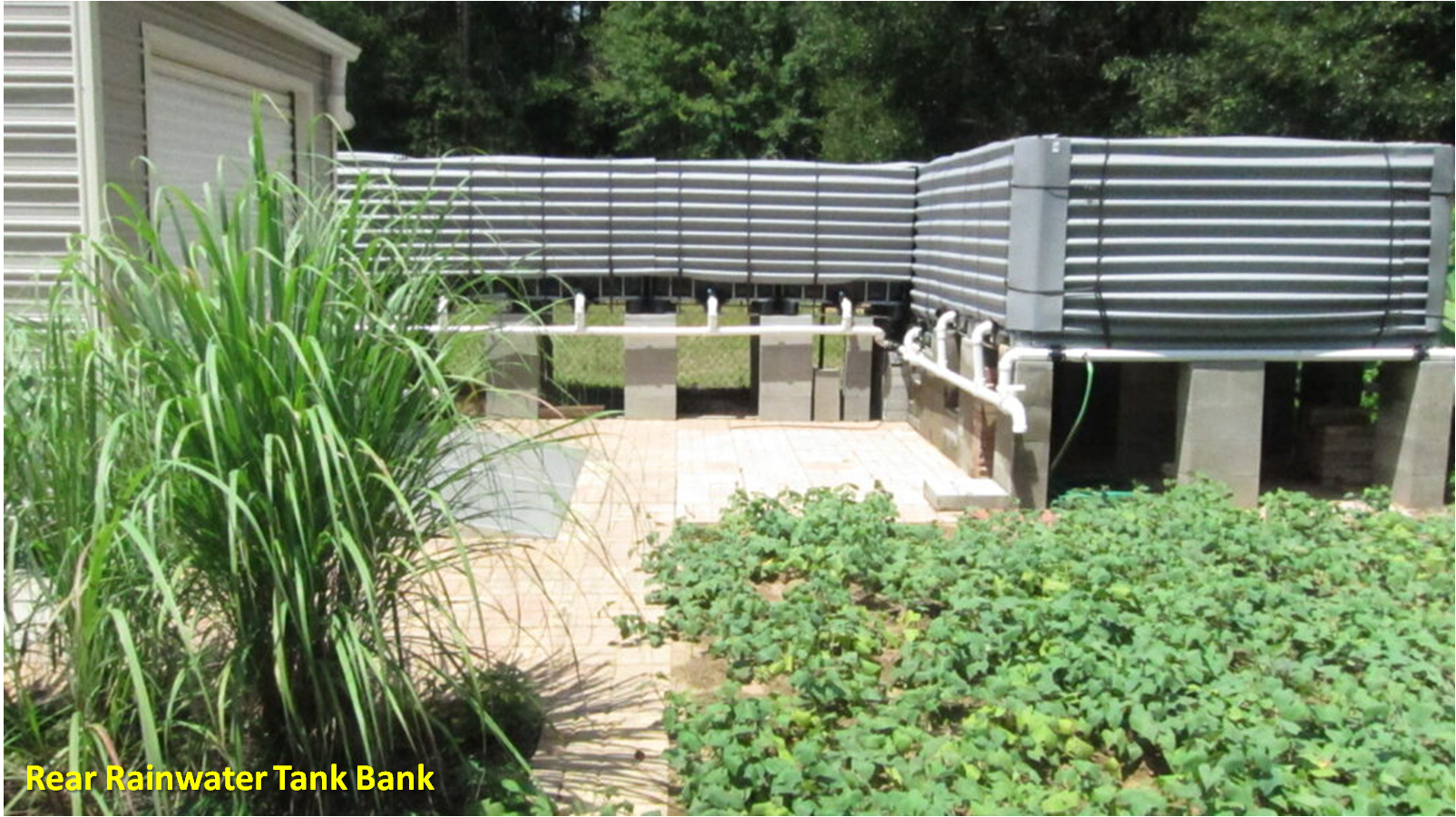Summary: 2016 was a year of learning from new friends, the construction of the rear rainwater tank bank and two 4’x16′ hydroponics tanks. We installed a 12’x28′ shed and published several newsletters. We also performed lots of maintenance on the systems already installed. Thankfully, most of our original designs proved successful. The bug wars intensified and we tested various organic methods for keeping them under control.
About ‘Dobie the Double Robot Guide / Battery Swapper
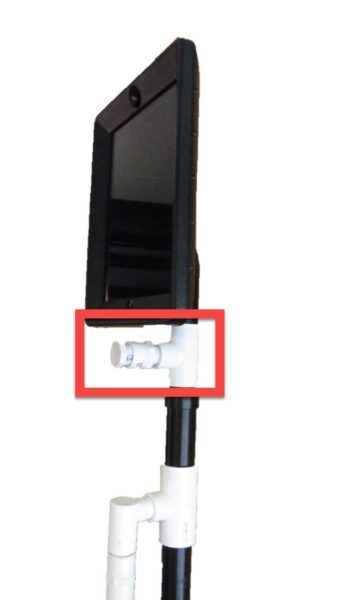
Originally purchased and modified to lead tours at EBG, it was our hope that Dobie the robot could eventually be used to deliver hot-swappable battery packs to the off-grid micro-sized housing units of Tiny Town.
Modifications were made:
- The first mod was adding attachment points to ‘his’ center post. The top point holds a battery pack for the sonar sensors of Dobie’s security system. The middle point is a clamp for attaching a tethering laptop or hotspot. The rear point acts as a counter-balance and lockable ‘wallet’ for shopping.
- The second mod was a hacked game controller for driving Dobie.
- The third mod was the addition of a voice interface (via Macro Scheduler). Unfortunately, Dobie responded poorly to voice commands in English (due to soft consonants) and we had to resort to giving commands in Spanish (hard consonants are easier for Dobie to understand).
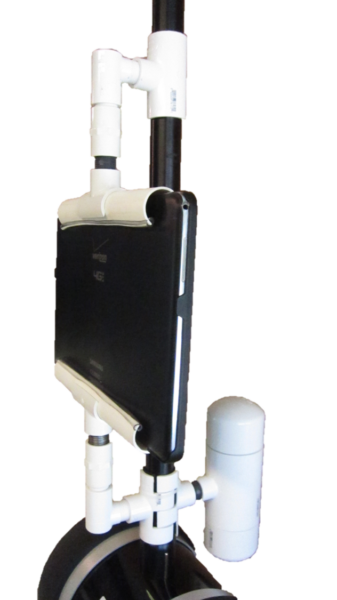
The middle attachments (left) hold a tethered laptop that allows Dobie to roam. The rear attachment is used as a locking “wallet”.
Limitations include the following:
- Overheating: Dobie easily overheats when operated outside.
- Poor autonomy: Although autonomous operation is possible, it’s highly impractical.
- Inconsistent: Smooth tires do not produce accurate turning angles. Thus it’s difficult to program his movements with any level of accuracy.
- Obsolescence risk: Dobie is already obsolete. Intelligent models are expensive and not-yet fully capable of the functionality that is needed to fulfill our goals for EBG.
.
.
Testing Dobie’s Ultrasound Attachment 010416 (video link)
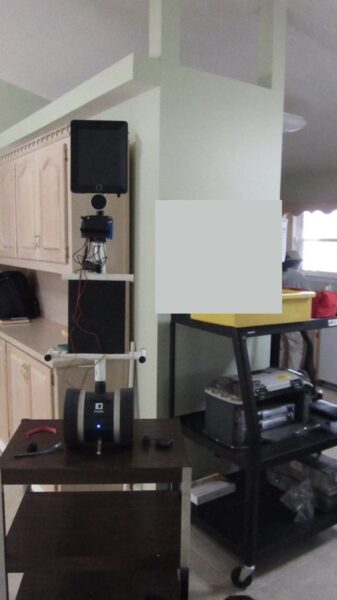
Originally hacked and rigged to provide semi-autonomous tours of EBG, Dobie (our Double robot) proved to be inadequate for our needs. After filming a series of interesting tests in a variety of different situations (and resurrecting Dobie after an untimely demise), we finally gave up on the Dobie project.
Click here to view a movie of the first test of Dobie’s portable ultrasound attachment. Impractical but effective, the audio feedback from this sensor would be used to help avoid obstacles during remote steering.
.
.
.
.
.
.
Happy Harvest 062116
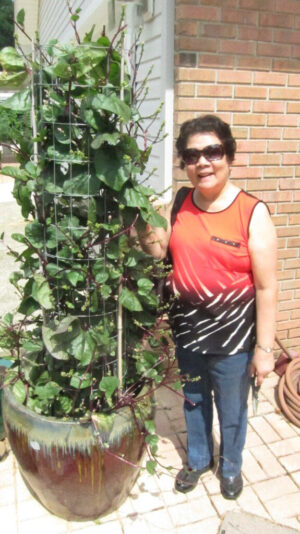
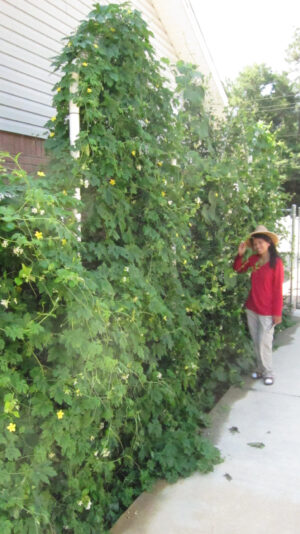
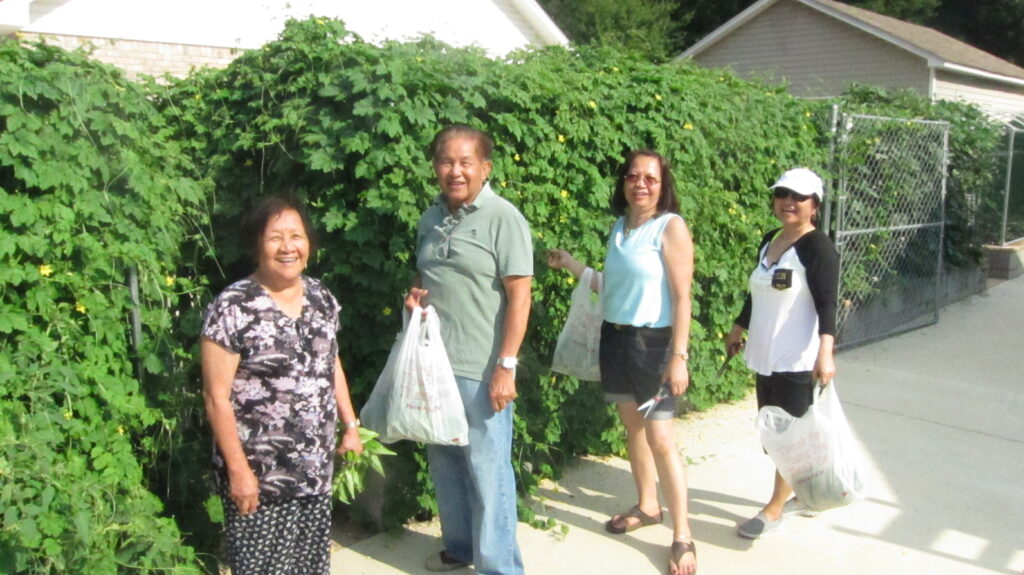
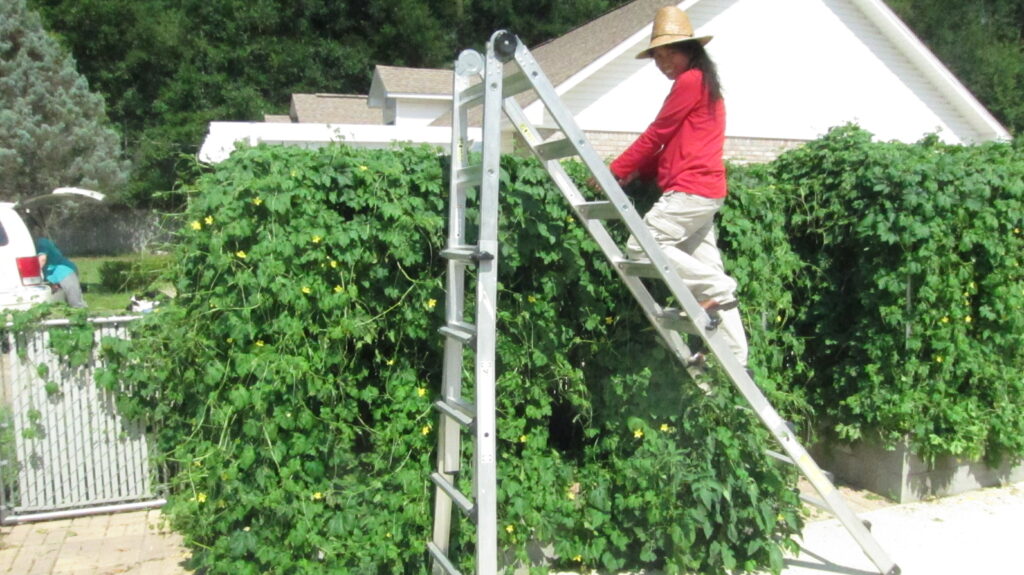


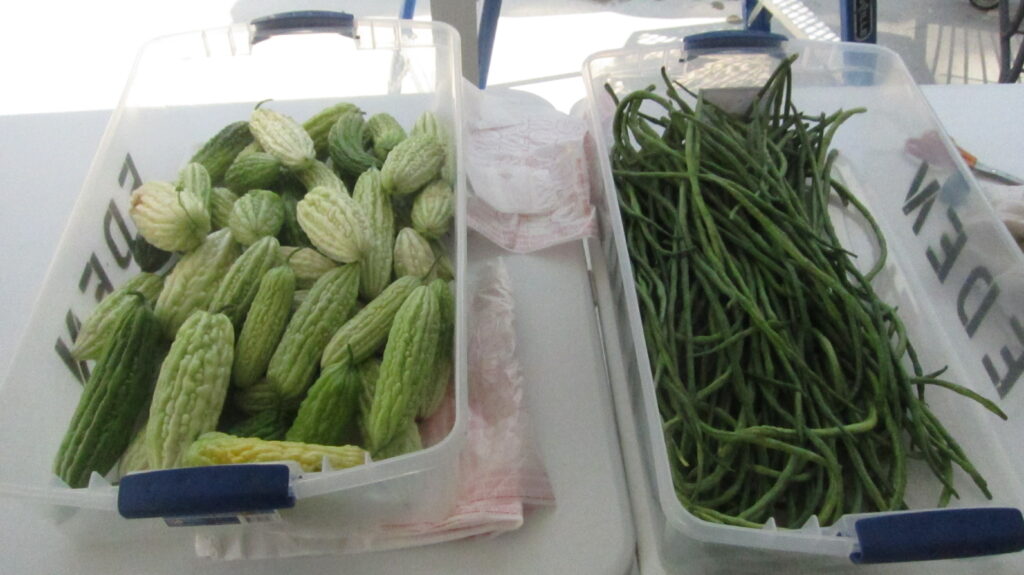

Our friends appreciate freshness. Many enjoy participating in the harvest, as shown above.
Building Hydroponic Tank #3 032316 (link)
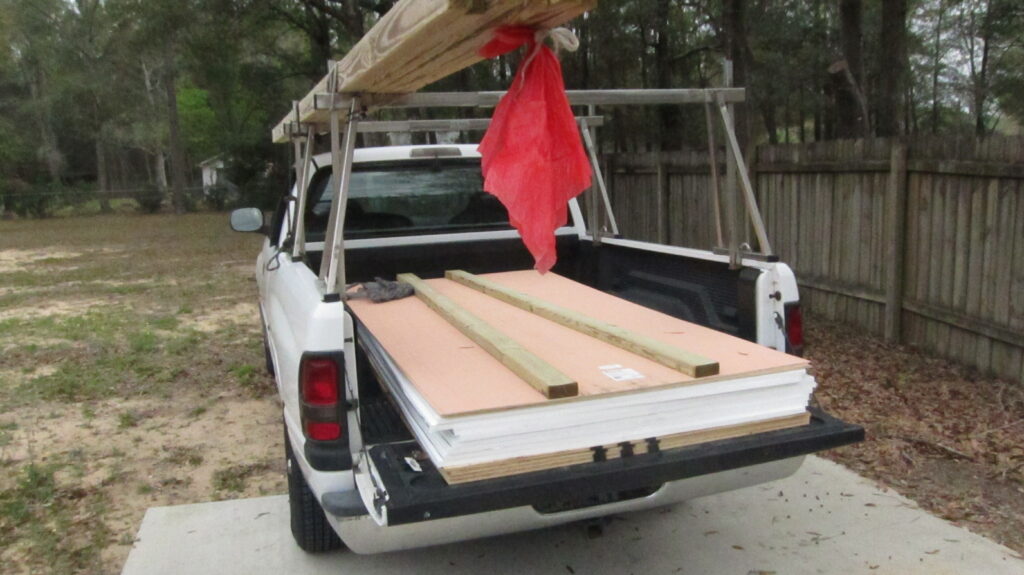
Construction of Hydro Tank #3 begins. After upgrading our previous designs (now gen-2), and planning the construction, the first step is to purchase materials.
Read more about EBG’s Hydroponic Tanks (including the Bottom Line).
Rear Tank Bank Installation 062316 (link)

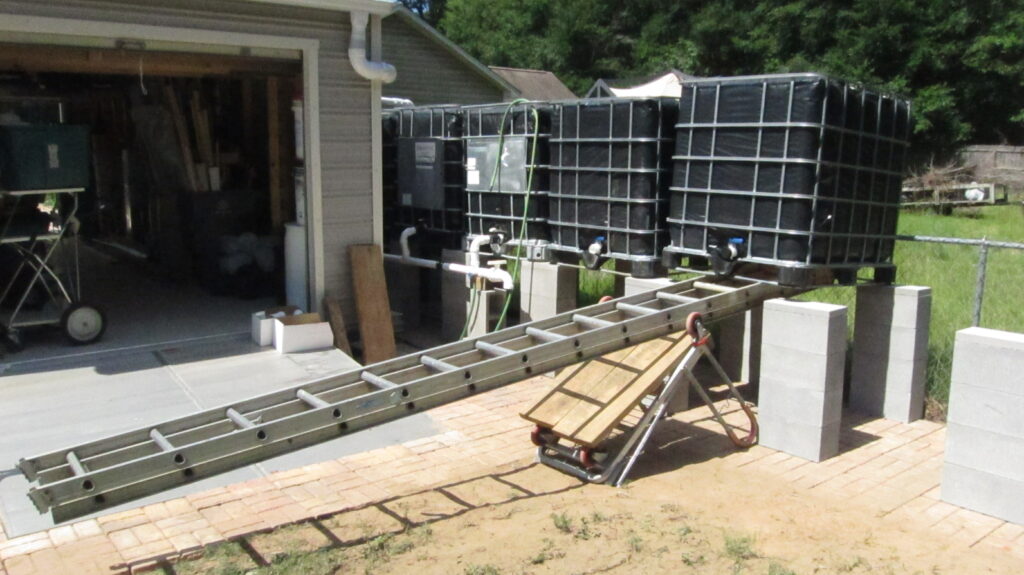
The photos above show the rear tank bank under construction. It would later be extended from 5000 gallons to 7000 gallons. Lacking experience, we made several mistakes. First, we underestimated the amount of settling under load (when full, each tank weighs just about a ton). Second, we mixed small (270-gallon) tanks with large (330-gallon) tanks, which complicated plumbing. And, we made no provision for tank removal or replacement. These problems and more would be solved in time.
Read more about EBG’s Rainwater Collection and Distribution system (including the Bottom Line).
EBG Flyer 062416


Eden Tomato Imports and Kangkong 070116

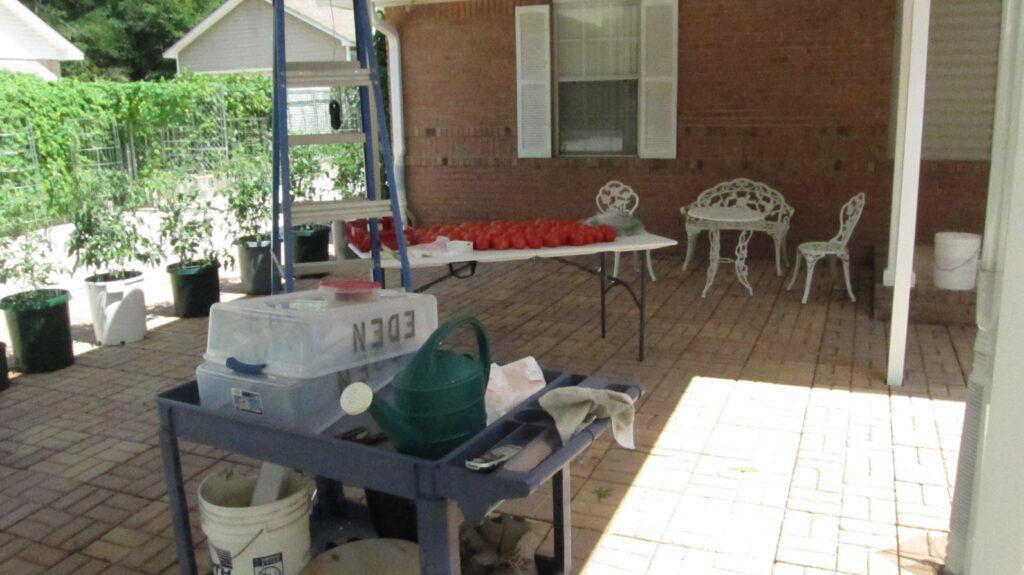
Harvested in the first weeks of June, tomatoes are quickly distributed through our growing network of friends (above).
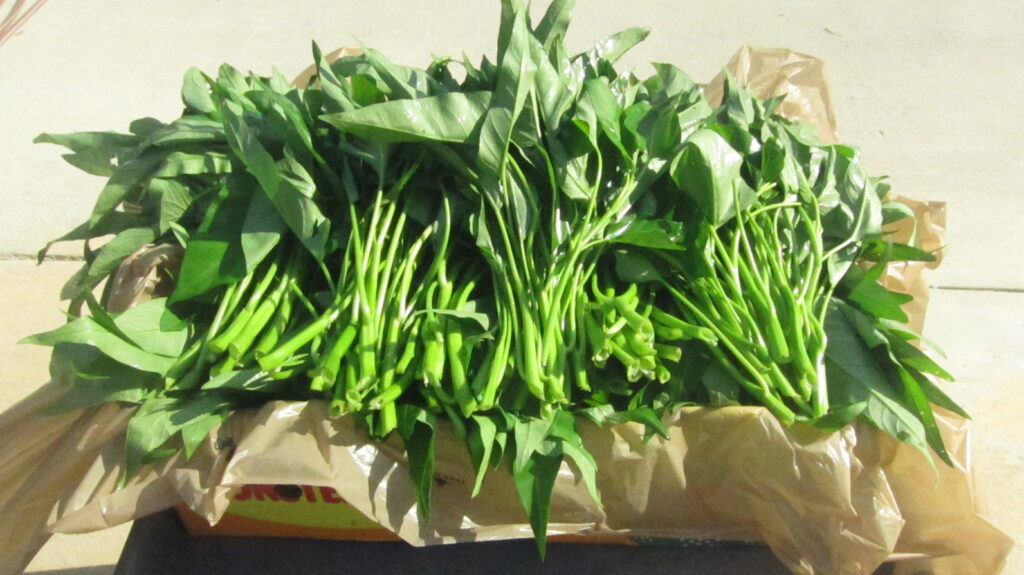
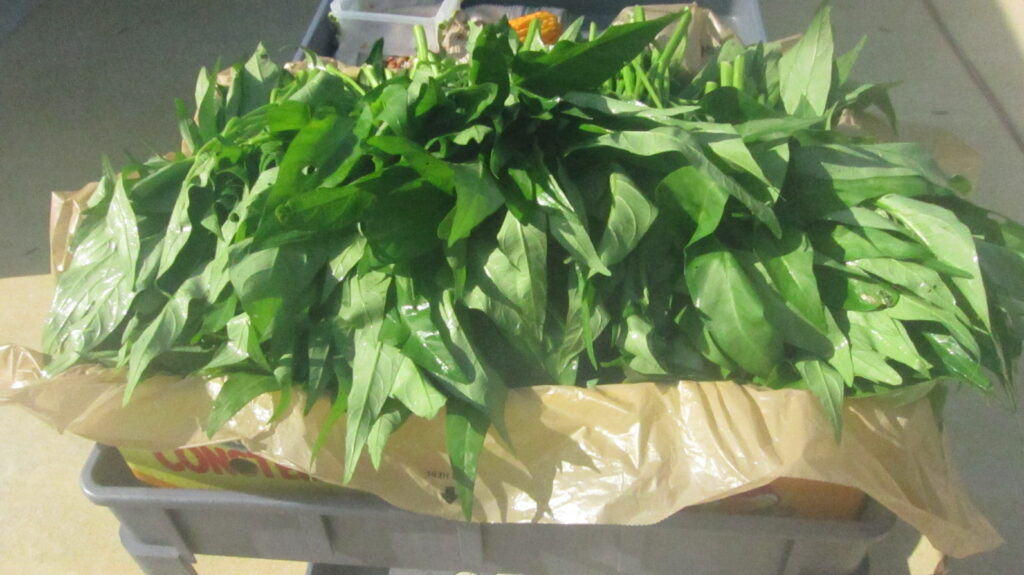
Kangkong (aka water spinach) is an exotic green leafy vegetable used in the South and South-East Asian cuisine (above). Its gently sweet, mucilaginous, succulent leaves and hollow stems are very popular in salads, braised and stir-fries. This fast-growing leafy vegetable grows equally well in water or soil.
EBG Garden Photos 071016
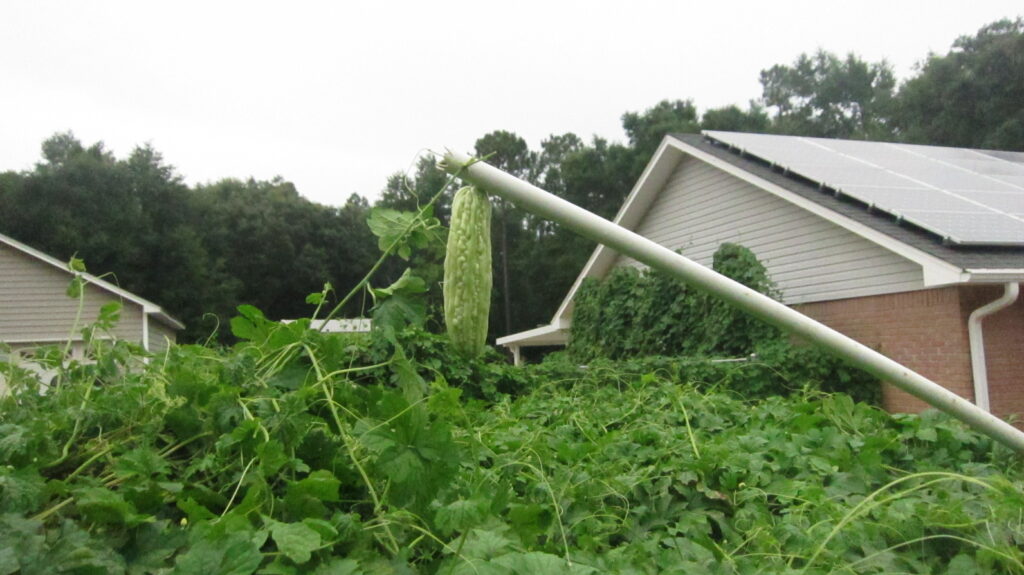
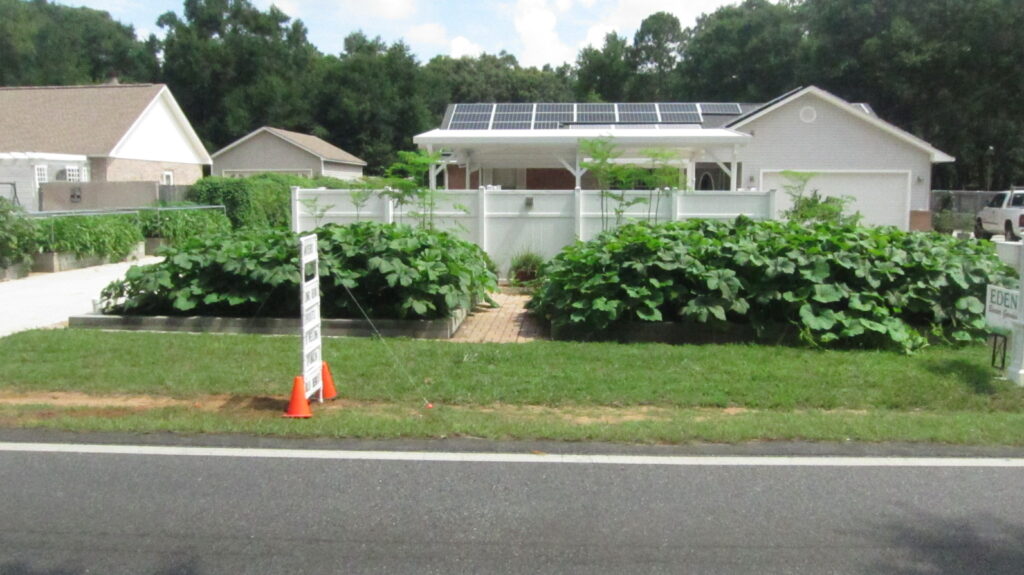
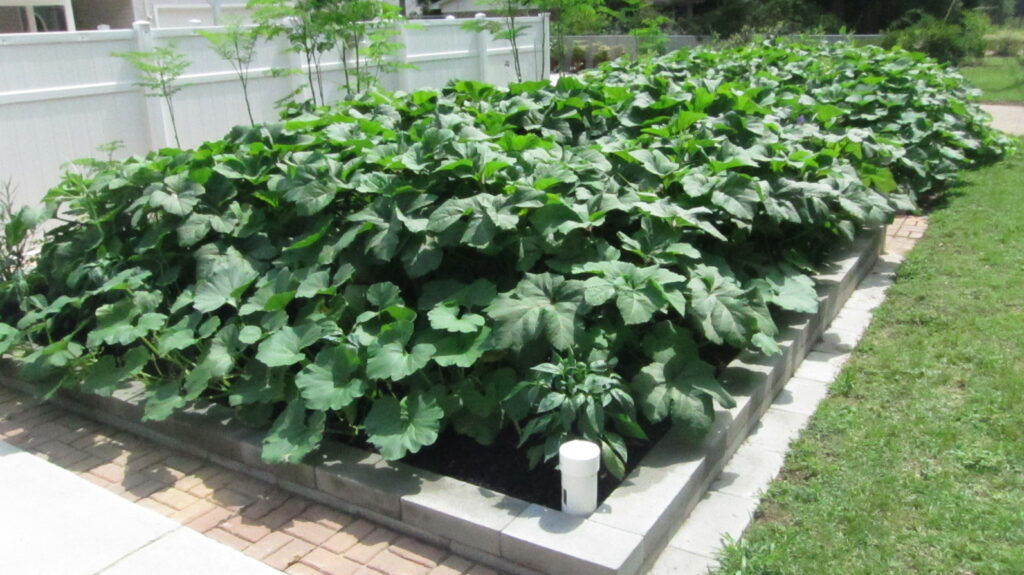
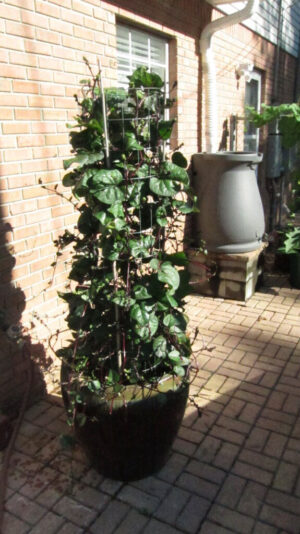
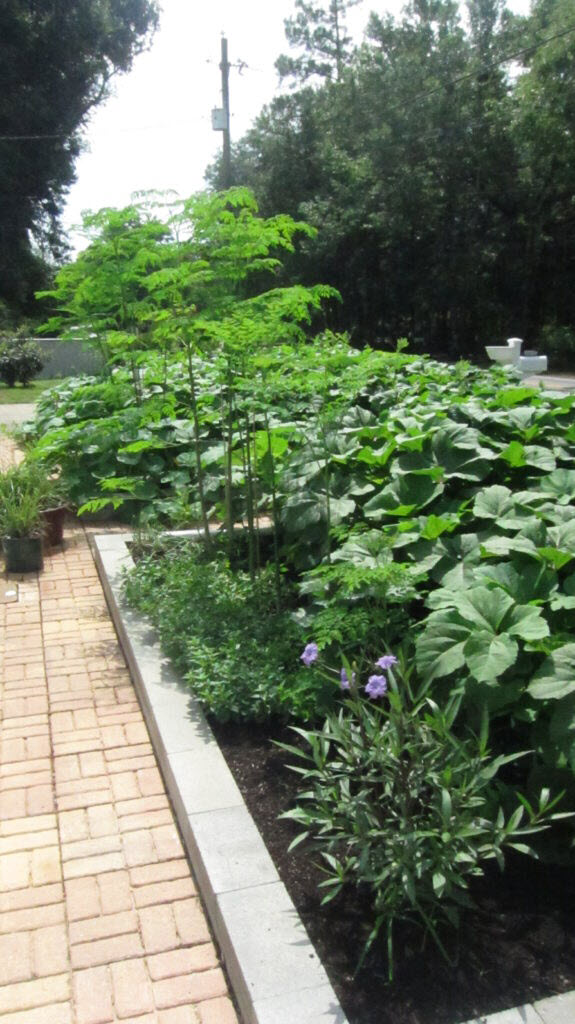
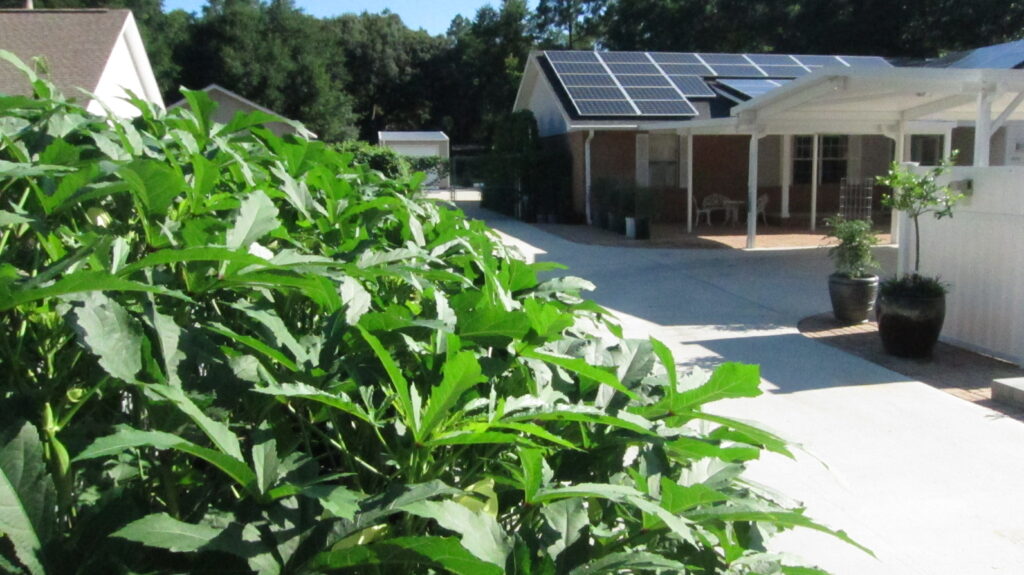
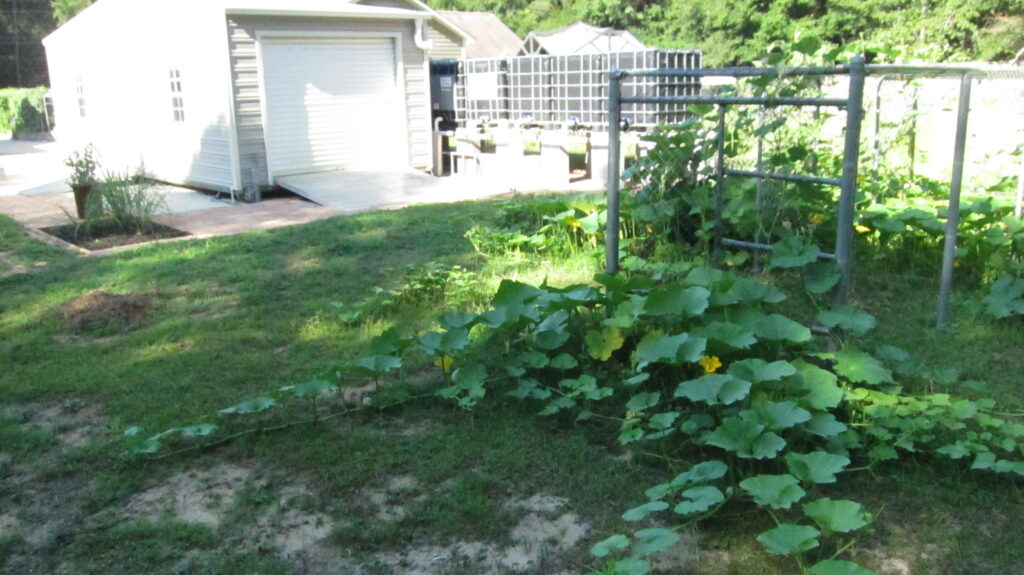
New Hydro Drain Pump 090816 (link)

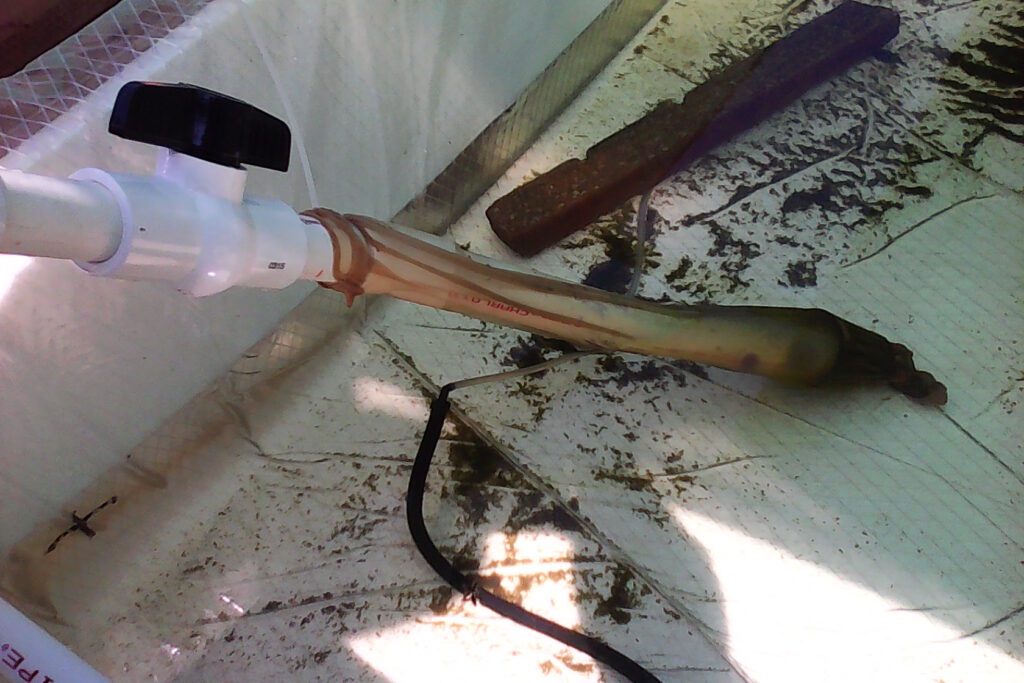
Draining 200 gallons quickly takes a good-sized pump, specially outfitted here (above) to do the job.
Read more about EBG’s Hydroponic Tanks (including the Bottom Line).
Eden Garden Photos 091216
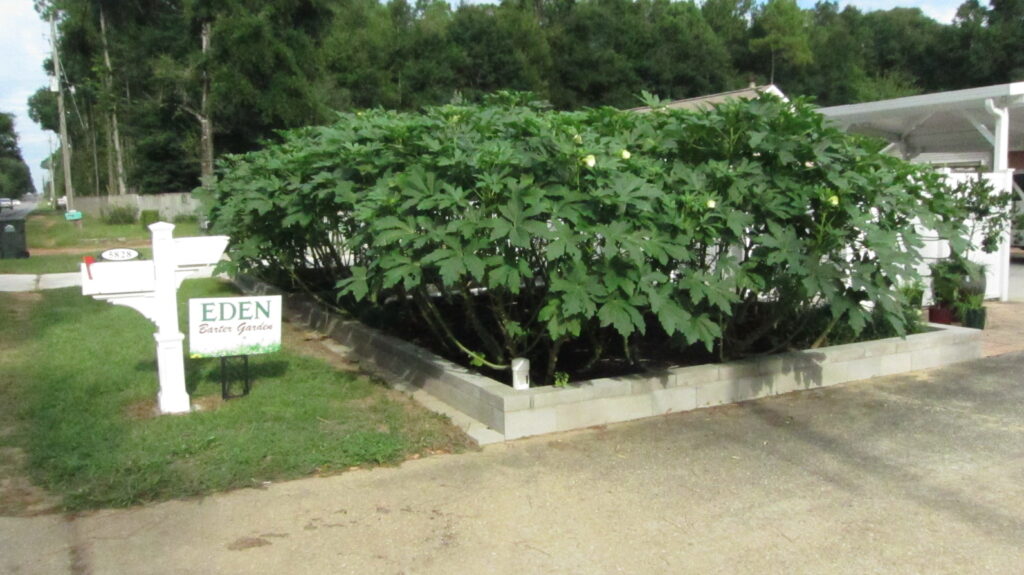
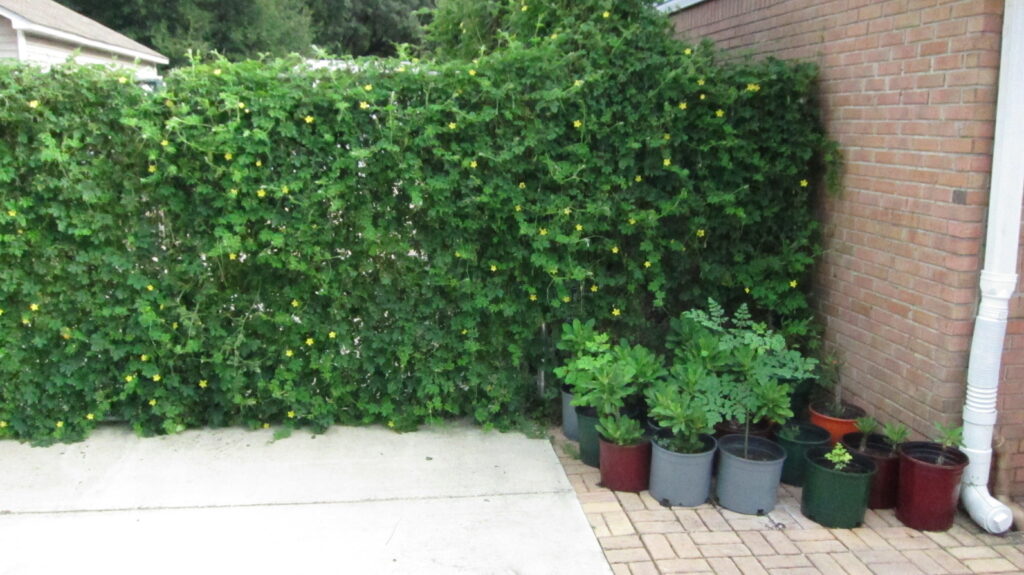
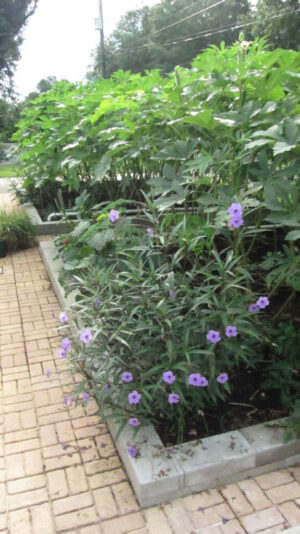
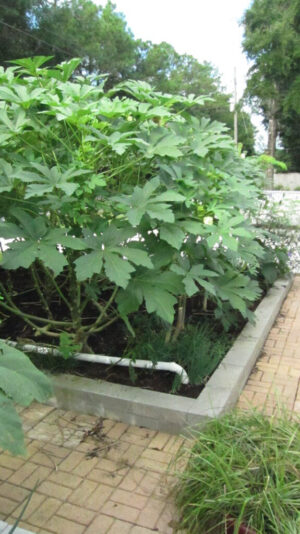


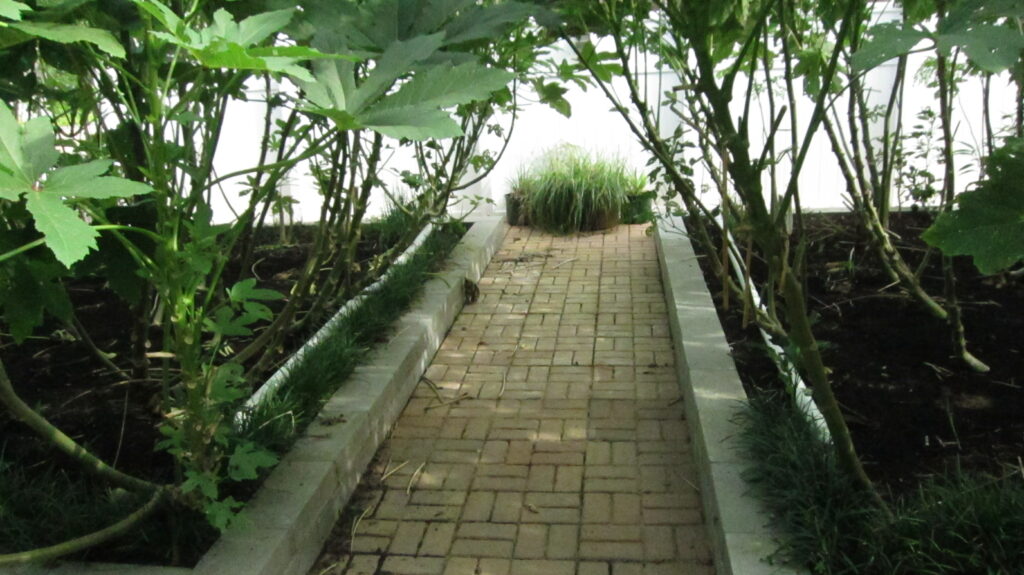
Overshadowed Front Walkway between Raised Beds #10 and #11
Downspout Filter Testing 091816 (link)

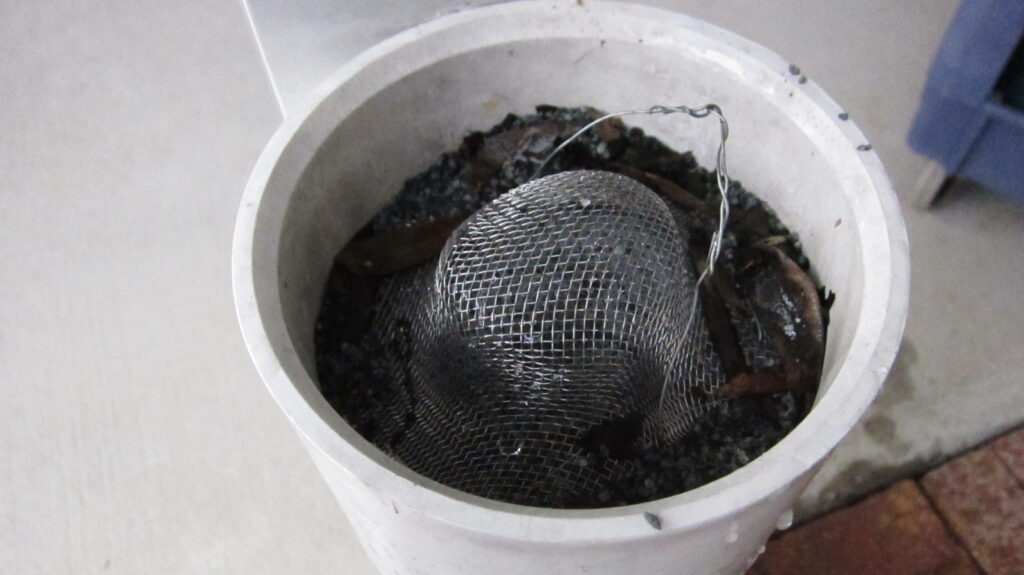
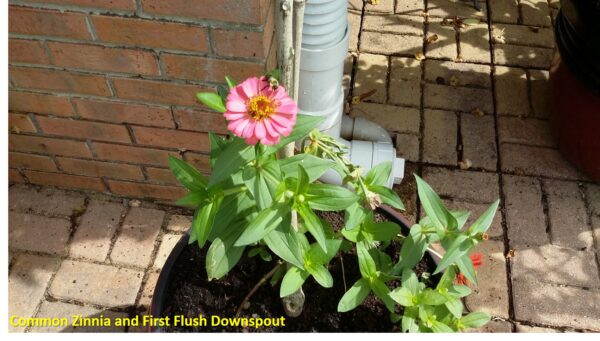
Our testing of the often-recommended first flush system (shown behind the Zinnia flower above) for keeping debris out of the rainwater tanks produced unsatisfactory results. Although effective for removing the granular debris that sluffs from composition roofing shingles, it doesn’t stop leaves, because leaves float! Our new three-layer strainer outperformed the first flush system. Best of all, it’s invisible when installed. And, after several years operation, we had no problem with sludge buildup in the system (or sump). Read more about EBG’s Hydroponic Tanks (including the Bottom Line).
Water Spinach (Kangkong) 092516
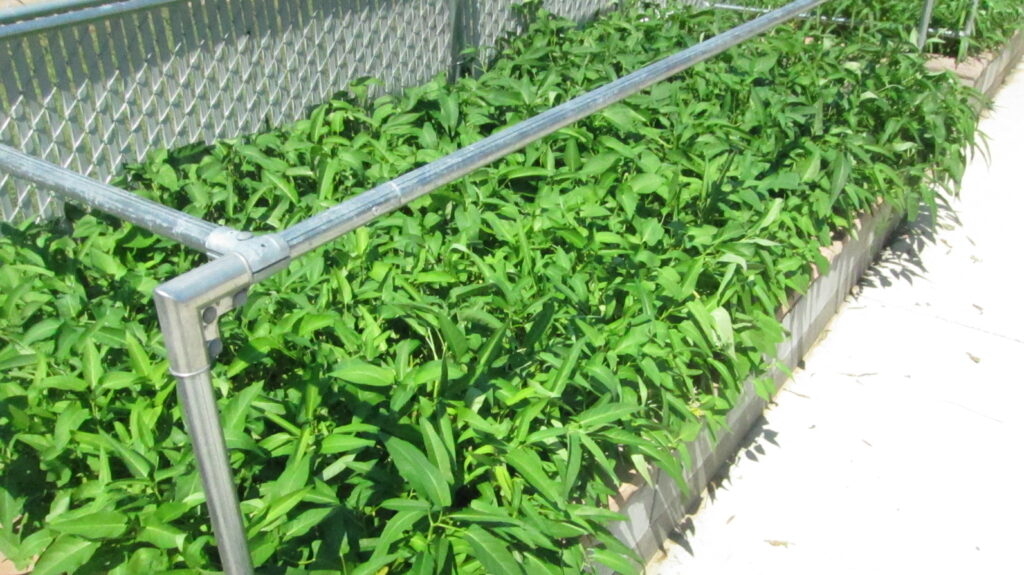
A unique herbaceous plant, Water Spinach is incredibly easy to grow. You can literally drop a cutting into a bucket of water, and it will grow. Delicious stir-fried or battered for Tempura, kangkong is high in beta-carotene, natural antioxidants, protein, carbohydrates, and dietary fibers. It’s also rich in electrolytes, including sodium and potassium.
.
Young Moringa Trees 092516
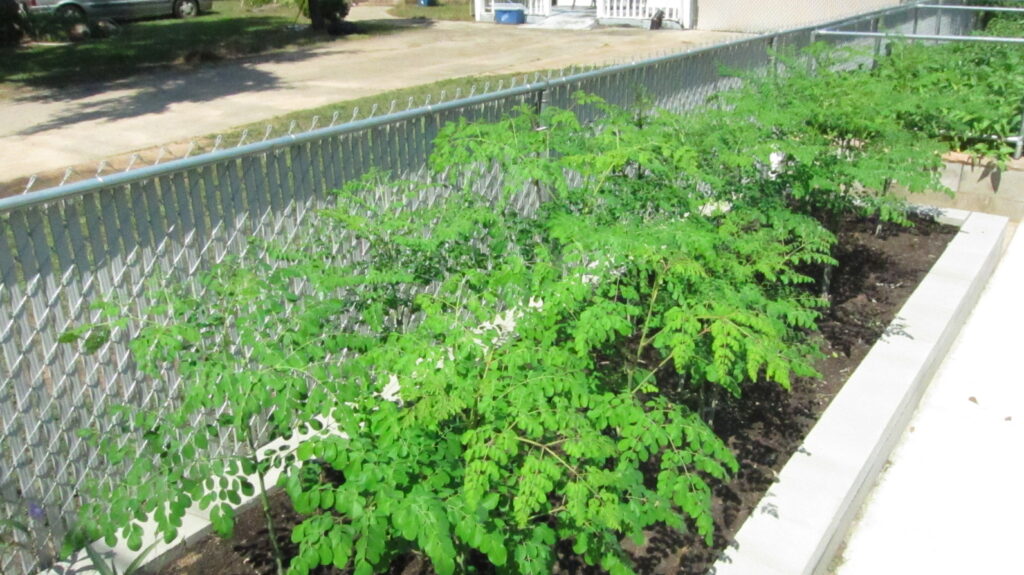
Bitter Melon Vines 092516

After 45 days of growth, the front raised beds and trellises are completely overgrown. Featuring an abundance of small yellow flowers, Bitter Melon brings in the bees and is sometimes planted to produce a fast-growing screen that can easily provide privacy.
Cycling Hydro Tank #4 092516 (link)
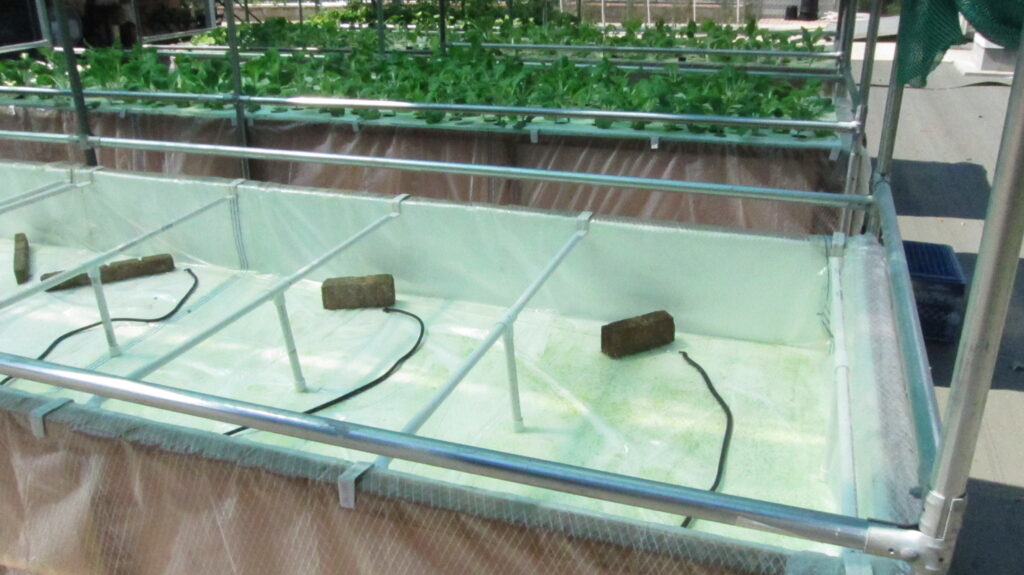
Tank #4 has been emptied and cleaned in preparation for planting the next crop. Note the aeration hoses weighted down with bricks to keep them submerged. Note also the gen-3 raft supports that slide along the top side rails of the tank.
Read more about EBG’s Hydroponic Tanks (including the Bottom Line).
EBG Newsletter Issue #1 Produced 092516
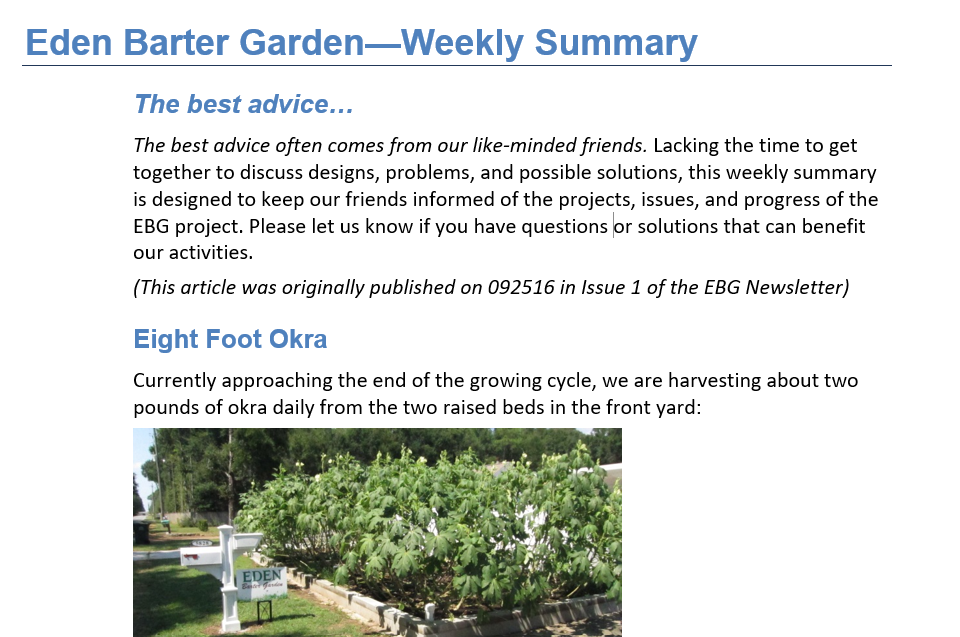
Issue #1 of the EBG Newsletter was distributed (in Word format) on this date by email.
EBG Newsletter Issue #2 Produced 100716
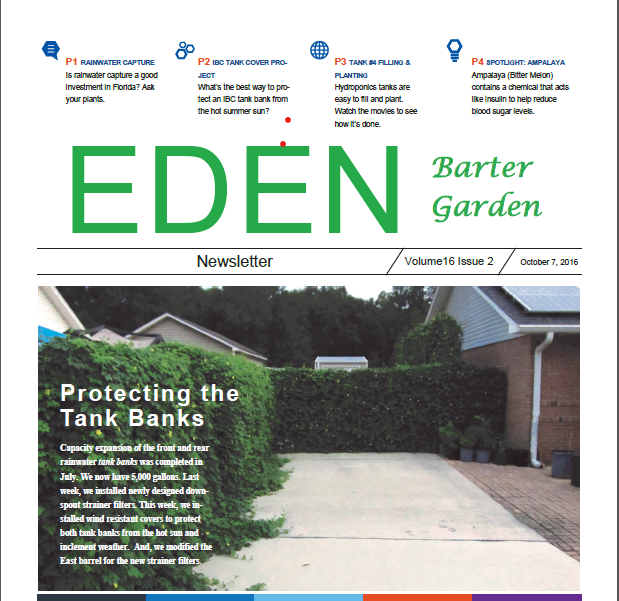
Issue #2 of the EBG Newsletter was distributed (in PDF format) by email to over 200 friends. Unfortunately, the links in the newsletter didn’t work properly on iPhone devices.
Spotlight: Pensacola Permaculture (110816) (links)
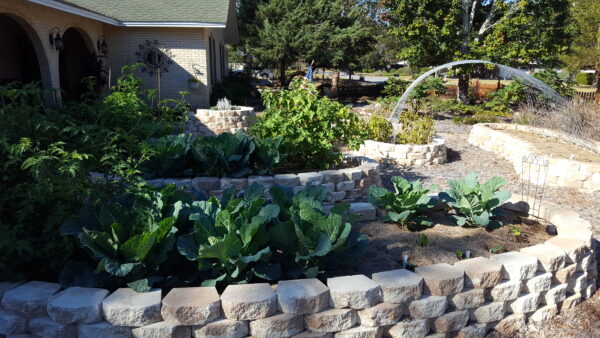
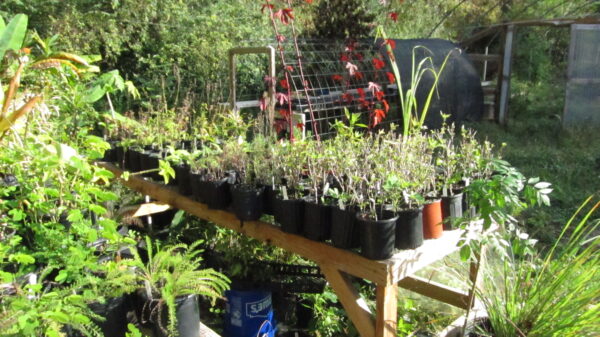
Pensacola Permaculture specializes in ecological landscape/garden design, maintenance, and quality food products.
Founded by nature and wellness enthusiasts Michelle and Rick Wells, Pensacola Permaculture is the result of over 10 years of experience working in Healthcare and Engineering fields. Years spent in these demanding fields, along with starting a family, highlighted the need to preserve optimal health and well-being. Studying ecological design fueled a strong passion to learn techniques to restore the environment and provide an authentic lifestyle for their family and yours.
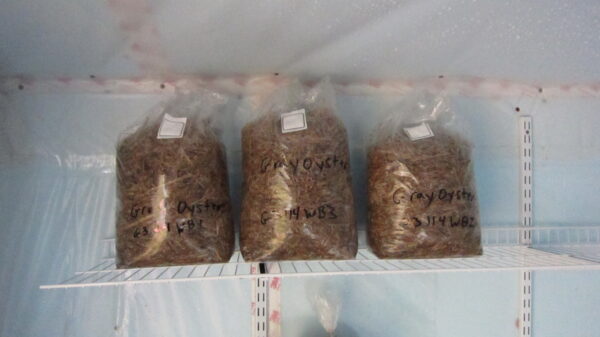
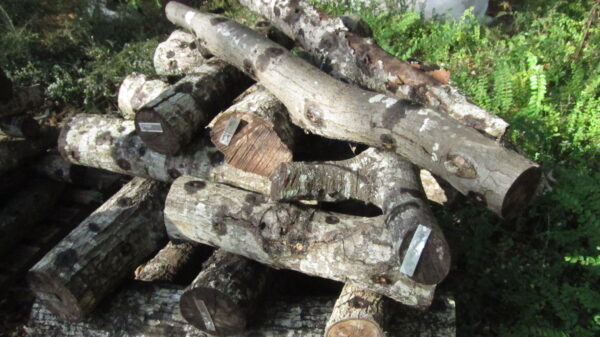
After 5 years of trial and error in applying these solutions personally, they began to spread the word and share these solutions within their small community. Years ago, they started with just a seed and today offer Permaculture garden design and maintenance services on a small and large scale. Products from the 4-acre farm include cultivated mushrooms, seasonal vegetables, honey and eggs. An onsite nursery provides unique and productive perennial plants, which are used in landscape designs and for individual sale.
Pensacola Permaculture offers classes on how to cultivate oyster mushrooms. Click here to view a demonstration hosted by Rick.
Spotlight: Butler’s Countryside Farms (113016)
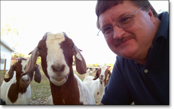
I’ve had lots of requests from folks for plans for the elevated planting beds that I’ve been building over the past few years, so I thought this would be a good venue to share my technique.
Constructing Elevated Planting Beds (by John L. Butler, Jr.)
When designing these beds, my main goal was ease-of-access, mainly because my wife and I are finding it more and more difficult to crawl around on the ground when taking care of a garden.

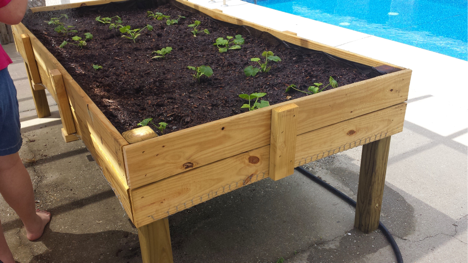
We soon discovered that elevated beds offer a few unexpected advantages as well. First, we lose less produce to deer, as they don’t get into the plants anymore. Second, moisture control is easier: any excess water drains right out and we can tell immediately that we’ve watered them well when the water starts dripping out below.
Here’s the parts list:
- 9 – 5/4” x 8’ Deck Boards
- 2 – 4” x 4” x 8’ Posts
- 1 – Roll of Chicken Wire
- 1 – Roll of Landscape Fabric
- 1 – Box of 1 1/2” or 2” Nails (deck nails are best)
- Staple gun and heavy-duty staples.
Start by cutting the 4” x 4” post into thirds. This should give you 6 posts around 32” each. You’ll only use 4 legs for each planter, but trust me, you’ll want to build a few of these beds, so it’s good to have the extras.
Next, cut 4 of the 5/4” deck boards in half. You should end up with 8 sections around 4’ each. These are for the ends and cross support. You’ll have an extra one here too.
Next, cut one of the 5/4” deck boards into 1’ sections. These will help support the side walls.
To assemble, start with two of the 4” x 4” legs and lay them parallel to each other on a flat surface about 8’ apart. Lay two of the 8’ deck boards in parallel on the legs, flush with one edge. Go ahead and nail these pieces together.
Next, make a mark every 2’ along the deck boards you just attached. Then add a 1’ section of deck board centered at every mark to help tie the two parallel boards together (the long deck boards tend to twist under pressure). It’s important to extend the 1’ section about 1-1/4 inch from the top of the top deck board so that you have an overhang of at least an inch; you’ll need this overhang later, when attaching the cross supports. Repeat these steps for the other side.
Next, stand up the two sides just finished and prop them up with a chair. Then, attach the 4’ deck boards (in pairs) to connect the sides. This will give you the basic frame of the planter.
After the frame is complete, add 3 of the 4’ deck boards to the underside of the planter and use the extended 1’ sections as guides and supports.

After the nailing is complete, attach sections of chicken wire to the inside floor of the planters. You can run it side-to-side, or end-to-end, depending on the width of chicken wire you buy. Be sure to overlap each run and extend it up the walls a few inches. Repeat this procedure with the landscape cloth.
Finally, fill the planters to the brim with potting mixture. The landscape fabric will hold the potting soil, and let any excess water drain out. The chicken wire supports the landscape fabric and the cross sections support the chicken wire.
I hope you enjoy this project, and Happy Farming!
Garlic Planting 120216

Garlic is sprouting in our pots (and one raised bed) and will soon be bedded in straw. Also: a tray of expensive Japanese Ashitaba seeds are now “resting” (for thirty days) in the refrigerator (stratification is required for germination).
.
.
EBG Microgreens 120216

Our expanded sprouting table is in full operation. Our first test of micro-greens is underway. Sprouts for a Basic Salad Mix are shown here at day-6, in a tray of compost (rear), and coco-coir (foreground). Compost seems to be the superior substrate.
.
.
Spotlight: Manning’s Feed & Seed 120216 (link)
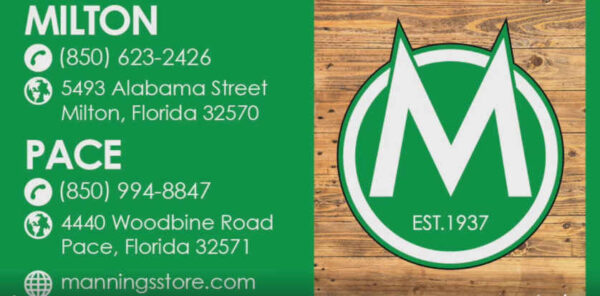
It’s citrus season! Here at Eden, we rely on Manning’s for seeds, supplies, advice, and more. If they don’t have it, they can get it, and they can provide tips to assist all of your gardening efforts (and more). Stop in and say “hi”. Please click the button below to visit Manning’s Facebook page.
EBG Living Harvest Cup 120216
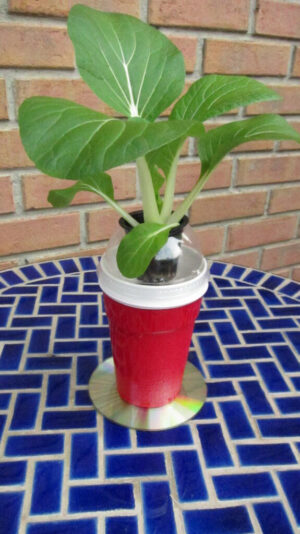
Designed as a holiday gift for family and friends, the Living Harvest Cup (left) is a mini Kratky hydroponics system.
These Bok Choy plants are unique, attractive, edible, and alive. Lasting up to three weeks, you can clip what you need on a daily basis and watch as it continues to grow. Perfect for holiday table spreads and mantles, these miniature hydroponic tanks let you witness the beauty of soilless gardening. No assembly or maintenance required!
.
.
.
.
.
.
.
Raised Bed Wall Correction 120616 (link)

The prep work comes first. The cover frame is rotated off the raised bed and cleaned (above). Then the frame is moved out of the way. Read more about EBG’s Raised Garden Beds (including the Bottom Line).
EBG Newsletter Issue #3 Produced 120716
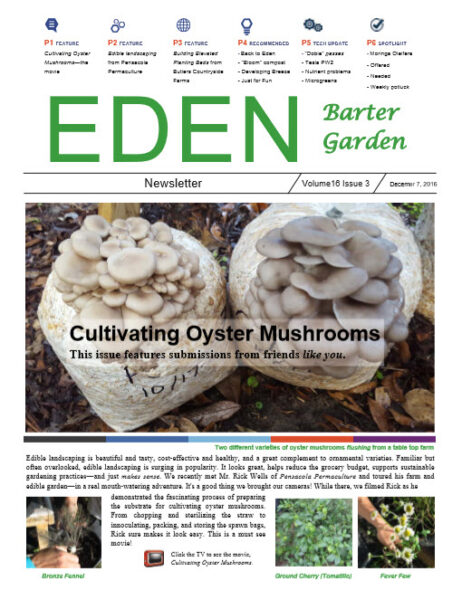
Spotlight: Moringa Oleifera (Malunggay) 120716

The leaves, bark, flowers, fruit, seeds, and roots of this tree are used to make medicines. Moringa contains proteins, vitamins, and minerals. As an anti-oxidant, it helps protect cells from damage. Moringa is used for anemia, arthritis and other joint pains, asthma, cancer, constipation, diabetes, diarrhea, epilepsy, stomach pain, stomach ulcers, intestinal spasms, headache, heart problems, high blood pressure, kidney stones, fluid retention, thyroid disorders, and bacterial, fungal, viral, and parasitic infections, to reduce swelling, increase libido, prevent pregnancy, boost the immune system, and increase breast milk production.
It is also used as a nutritional supplement or tonic.
• Moringa can be applied directly to the skin as a germ-killer or drying agent (astringent). It is used topically for treating infection (abscesses), athlete’s foot, dandruff, gum disease (gingivitis), snakebites, warts, and wounds.
• Moringa can be grown cheaply and easily, and the leaves retain vitamins and minerals when dried; it is used in India and Africa to fight malnutrition. The immature green pods (drumsticks) are prepared similarly to green beans, while the seeds are removed from more mature pods and cooked like peas or roasted like nuts. The leaves can be eaten raw, or cooked and used like spinach. They can also be dried and powdered for use as a condiment or food supplement.
• Oil from moringa seeds is used in foods, perfume, hair care products, and as a machine lubricant. The seed cake remaining after oil extraction is used as a fertilizer and also to purify well water and to remove salt from seawater.
• Tea: Infuse fresh or dried leaves in boiling water for five to 10 minutes. Flavor with lemon or lemongrass. Makes a light, delicious brew. For more information, go to www.webmd.com. —image courtesy of Google.
Dry Mixing Hydroponic Nutrients 120716

Our quest to replace high-priced liquid nutrients for our hydroponics tanks took a major step forward thanks to Mr. Rick Wells of Pensacola Permaculture, and Mr. D. Cavage—a highly experienced hydro-gardener. Mr. Cavage provided the information needed to mix our own nutrients using readily available components. This change will allow us to reduce our (nutrient) cost-per-plant by up to 75%. Testing is underway. Stay tuned.
.
.
.
.
.
.
.
Tech Update: Dobie (the Robot) Passes Away 120716

It is with considerable sadness that we announce that Dobie (the robot) has passed away from catastrophic charger failure. Though never practical, this (our first) bot will be mourned—mostly because of the huge dent “he” left in our wallet. Dobie expired just short of an upcoming test of “him” leading an autonomous tour of EDEN.
Being this close to our goal of actually getting him to work, we decided to ship “him” back to the factory for resurrective repairs. You don’t want to how much it cost (sigh).
Postscript: After successful resurrection, we developed a voice-control module for Dobie. Unfortunately, Dobie would only respond to commands given in Spanish (who knew?). We also fitted a proximity alarm to keep him from being stolen by an ardent admirer. During testing (series 6) Dobie died again (June 2017?). This time, we decided to let him rest. Since then, he stands— now lifeless—in a corner of the office, a statuesque reminder of what might have been. Stricken by a digital semblance of grief, we eventually ‘gifted’ Dobie to a hacker friend. Alas, we have not been able to contact either (Dobie or our hacker friend) since then (sigh).
Next up, Year 4 (2017).
